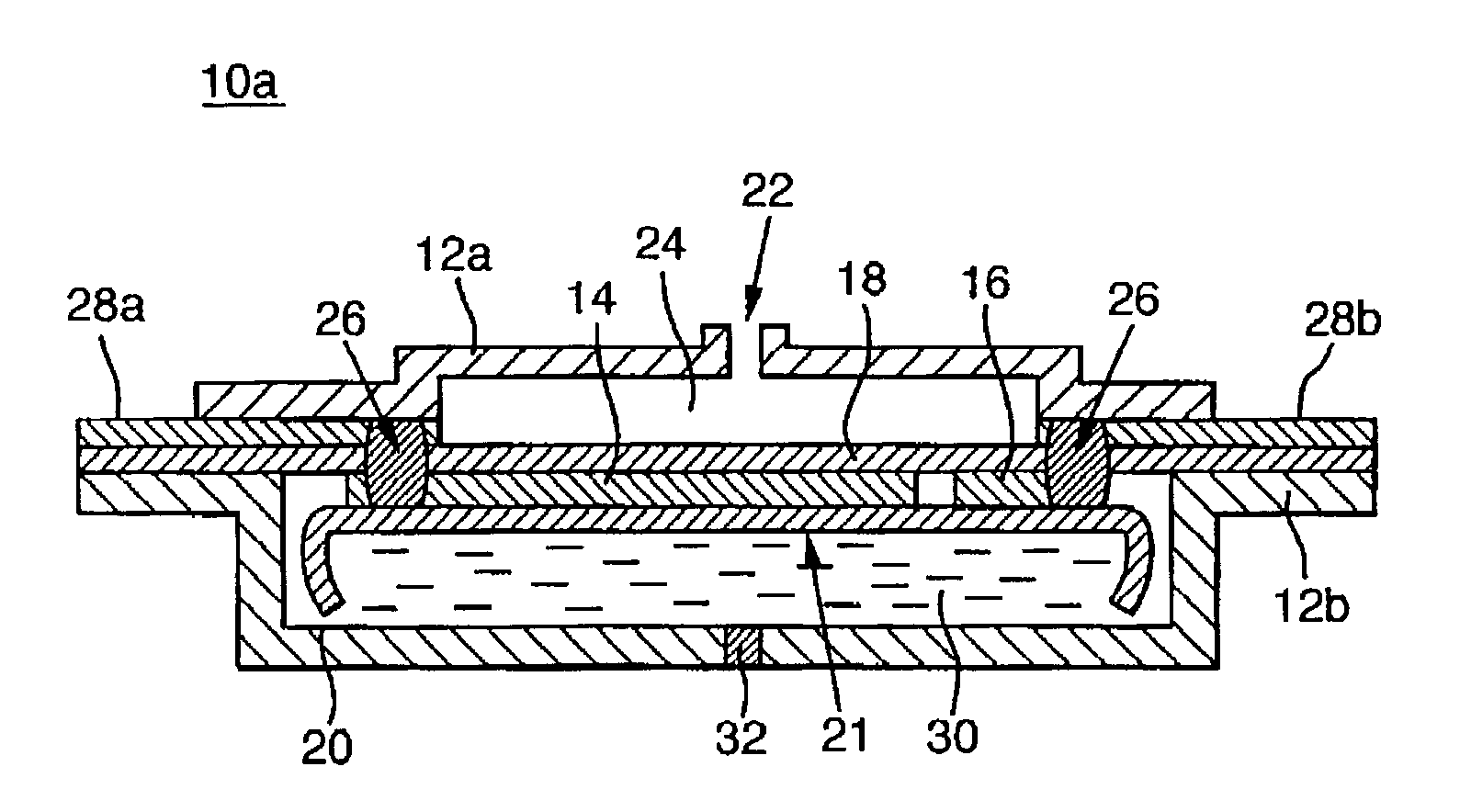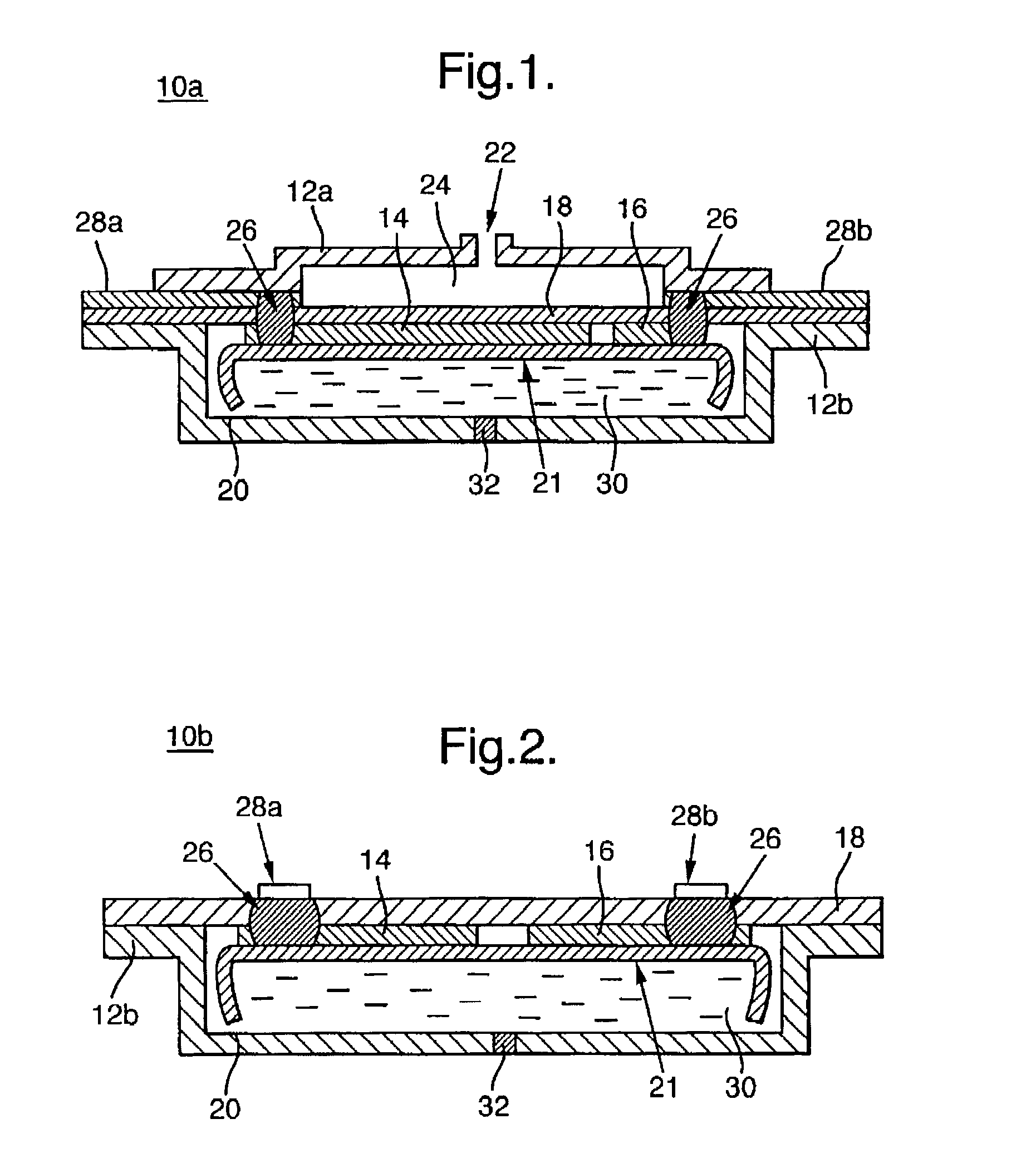Gas sensor and its method of manufacture
a gas sensor and manufacturing method technology, applied in the field of gas sensors, can solve the problems of high manufacturing cost of gas sensors with platinum terminals, high cost of platinum, and electrically conductive connections, and achieve the effect of cheaper manufacturing
- Summary
- Abstract
- Description
- Claims
- Application Information
AI Technical Summary
Benefits of technology
Problems solved by technology
Method used
Image
Examples
Embodiment Construction
[0035]Referring to FIG. 1 there is shown a sectional view of an electrochemical gas sensor I0a in the form of a right circular cylinder, the sensor comprises a two part housing 12a and 12b, a sensing electrode 14, a counter electrode 16, and external contact tracks 28a and 28b formed on a generally circular membrane 18. Electrodes 14 and 16 are formed from a mixture of electrically conductive catalyst particles in PTFE binder, and are screen printed or filter deposited onto the surface of the membrane 18 in the form of segments, as shown in the Figure. External contacts 28a and 28b are formed by urging conductive polymer, which may be loaded with conductive non-catalytic particles, through the membrane 18.
[0036]Housing portion 12b is cylindrical with a hollow interior defining an electrolyte reservoir 20, which in use contains a liquid electrolyte 30. Electrolyte 30 is maintained in contact with the electrodes 14, 16 by means of a wick 21. The electrolyte reservoir 20 is closed at t...
PUM
 Login to View More
Login to View More Abstract
Description
Claims
Application Information
 Login to View More
Login to View More - R&D
- Intellectual Property
- Life Sciences
- Materials
- Tech Scout
- Unparalleled Data Quality
- Higher Quality Content
- 60% Fewer Hallucinations
Browse by: Latest US Patents, China's latest patents, Technical Efficacy Thesaurus, Application Domain, Technology Topic, Popular Technical Reports.
© 2025 PatSnap. All rights reserved.Legal|Privacy policy|Modern Slavery Act Transparency Statement|Sitemap|About US| Contact US: help@patsnap.com



